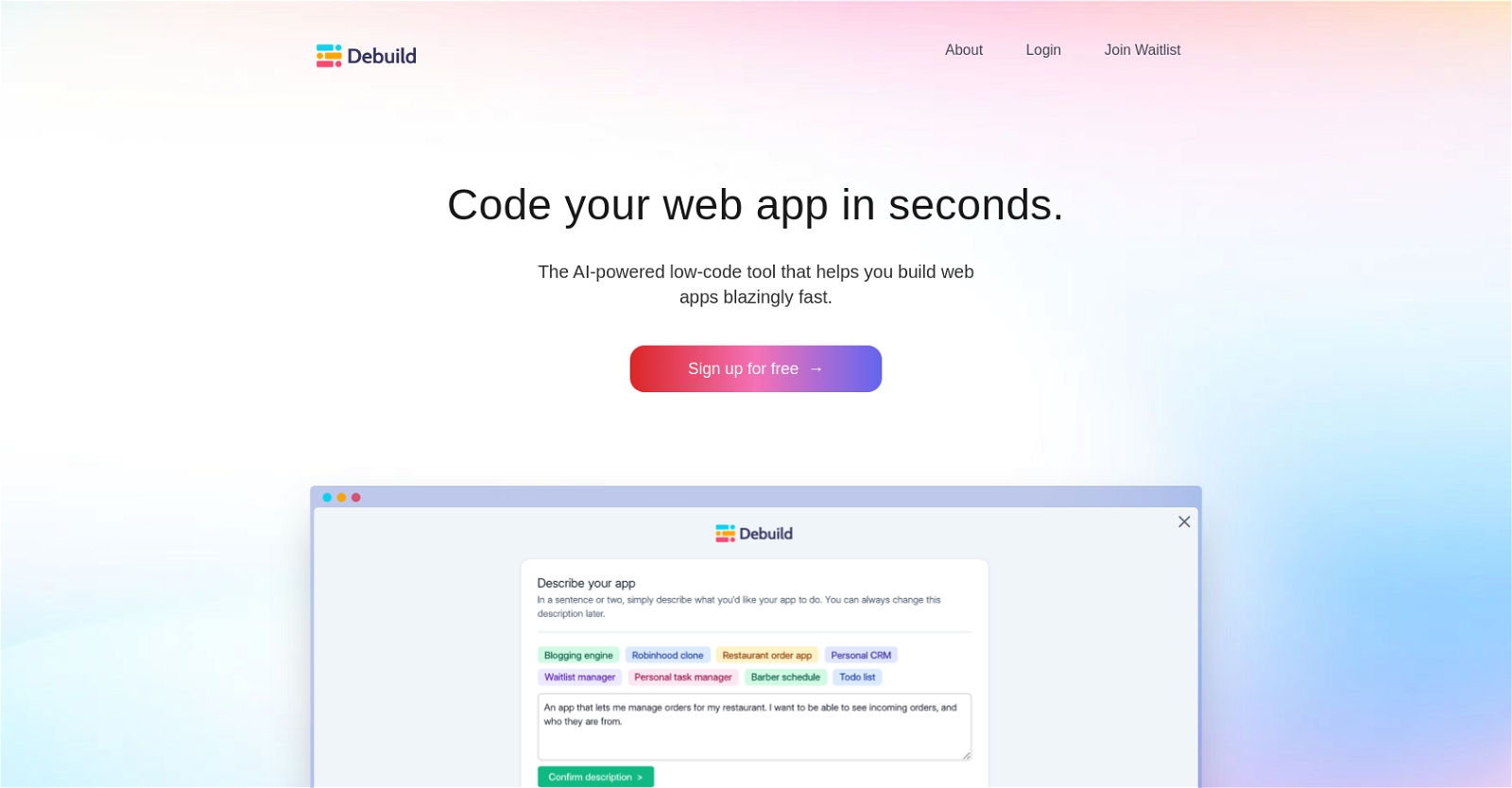How can businesses streamline their critical operations without having to undertake extensive coding? Is it possible to develop a web app that relies heavily on databases, without requiring an in-depth understanding of various coding languages? Can the use of low-code tools pave the way for efficient and quicker web app development? These questions often surface when businesses aim to optimize their operations utilizing technology.
According to a McKinsey report, traditional application development often leads to delayed projects, contributing to a lag in achieving operational efficiency. Moreover, a study by Gartner revealed that the shortage of skilled developers could hinder the digital transformation journey of many businesses. The use of low-code tools is a viable solution to overcome these issues. By simplifying the app development process, it ensures projects are completed on time, minimizes dependency on skilled coders, and empowers non-technical users to contribute towards achieving business goals.
In this article, you will learn about the process of developing a database-driven web app using various low-code tools. The focus will be on equipping you with the knowledge of how to utilize these tools efficiently to facilitate streamlined development, irrespective of your coding expertise.
You will be introduced to the basics of low-code tools, their advantages, and how they revolutionize the app development scenario. Furthermore, you will discover the steps involved in creating a database-driven web app and how low-code tools come into play in each step, ensuring a hassle-free development process.

Simple Definitions of Database-Driven Web Apps and Low-Code Tools
A database-driven web app is an application that uses a database to store and organize information. It presents and retrieves data to/from users – that’s why when you interact with websites like online stores or social media, the pages are often personalized for you. This is the work of database-driven web apps.
Low-Code tools are software that allows you to build apps with little to no coding. They provide pre-built elements and simple visual interfaces, so you don’t need to be a tech expert to create effective apps. These tools speed up development and make app creation more accessible to more people.
Unleashing the Power of Low-Code Tools in the Realm of Database-Driven Web Apps
Transforming the Mobile App Development Landscape
Mobile app development isn’t confined anymore to developers submerged in complex coding and technicalities. Today, businesses can leverage low-code mobile app development platforms that simplify the process and turn it into an efficient and agile practice. These platforms are revolutionizing how companies approach and handle mobile app development.
Low-code platforms are easy-to-use tools that require little to no coding, making it possible for non-developers to participate in app development. In essence, they relieve the bulk of manual coding and automate design, integration, and testing phases of mobile app development. The result is a faster development process that could give businesses a significant edge by reducing the software’s time to market.
Unleashing Business Potential with Low-code
The inherent agility and efficiency of low-code mobile app development mean that businesses can take advantage of these platforms to scale their app-making capabilities, innovate more effectively and respond to market changes swiftly. Moreover, since low-code development frees up the IT department from mundane programming tasks, they can focus on strategic projects that fuel business growth and transformation.
The use of low-code platforms is not limited to mobile app development. Many companies are using these tools to digitise their operations and streamline their business processes. For instance, they are creating business process management (BPM) systems, customer relationship management (CRM) applications, and numerous other digital solutions that enhance operational efficiency and customer engagement.
- Low-code platforms can enable businesses to respond swiftly to market dynamics and shift focus from maintaining existing apps to creating new ones.
- Low-code platforms empower non-technical staff, fostering a collaborative, cross-functional app development environment.
- They facilitate rapid prototyping, which is crucial for innovation and testing new ideas.
The potential of low-code mobile app development is vast; as they continue to grow in popularity, they are enabling organisations to unlock new avenues of growth and efficiency. The impact of these platforms goes beyond streamlining the development process; they are transforming how businesses function and compete in a digital-first world.
Strategies for Exploiting Low-Code Tools for Efficient Database-Driven Web App Development
Are Traditional Development Methods Holding Back Your Organization?
Do current development processes hamper your teams from innovating at the speed your business requires? Traditional, high-code development methods often slow mobile app production. Why? It’s mainly due to their complexity and the multitudes of processes involved. This approach often involves writing thousands to millions of lines of code and requires expertise in multiple coding languages. The more code written, the more likely mistakes or errors can occur, further delaying the application’s rollout.
The Speed Bump in the App Development Highway
The main struggle lies in the fact that traditional methods are too time-consuming and labor-intensive for today’s fast-paced digital environment. There’s a vast divide between the demand for mobile apps and the ability of developers to deliver them in a timely, efficient manner. This has led to a significant backlog of mobile app projects in many organizations. Hence, conventional app development strategies are not just delaying progress, but they’re also proving to be cost-inefficient, due to the number of man-hours and resources they consume.
A New Approach: The Success of Low-Code Platforms
Numerous forward-looking companies have adopted low-code mobile app development to break away from these inherent complications. One such example is the multinational Internet service provider, XYZ Corp. They transitioned from traditional methods to a low-code platform and saw a 50% increase in development speed and a 30% reduction in costs. Furthermore, the insurance giant ABC Inc. used a low-code platform for policy management app development. The platform enabled them to deliver a feature-rich application in just two months, which otherwise would have taken around six months using traditional coding. These case studies exemplify how low-code platforms can streamline the mobile app development process, ensuring applications are delivered faster and more cost-efficiently, demonstrating a promising approach for the future.
Bridging the Gap between Innovative Ideas and Execution: Low-Code Tools for Database-Driven Web App Creation
The Power of Low-Code Platforms
What if we could transform the way we create and iterate mobile apps? The world of low-code mobile app development provides this promising opportunity. With its convenience and efficacy, this modern approach to application development is truly a game changer. Low-code platforms enable swift deployment of fully functional applications by reducing the need for traditional hand-coding. This results in the acceleration of project turnaround and consequently, a significant increase in efficiency. It also diminishes the need for a deep technical skill set, making it a realistic endeavour for those previously impeded by the intricacies of conventional programming. The speed and simplicity of low-code mobile app development doesn’t compromise on the quality or the performance of the application. Hence, even with rapid app development, one can still experience exceptional app performance and unparalleled user interfaces.
Addressing the Challenges
Despite the clear advantages, adopting low-code mobile app development is often met with reluctance. This resistance is a result of the prevailing misconceptions that low-code is overly simplistic and lacks the robustness of traditional development methods. Critics argue that it may not cater to complex and unique app requirements, and could result in generic, sub-optimal applications. Furthermore, concerns about vendor lock-in and the fear of creating dependencies on specific platforms also cause hesitation in embracing this technology. However, these concerns are largely unfounded. Today’s top-tier low-code platforms offer flexibility and robust customization options that can cater to even the most complex app requirements. As for vendor lock-in, most modern low-code platforms ensure interoperability and data portability.
Implementing Low-Code: Success Stories to Follow
Numerous organizations across industries have successfully leveraged low-code platforms and have reduced their app development time by an astonishing margin. A classic example to consider is that of a prominent financial institution which streamlined their app development process by utilizing a leading low-code platform. With this move, they reduced their development time from months to just a few weeks while delivering a highly intuitive and user-friendly app that greatly enhanced customer experience. Another success story comes from a retail giant that deployed a low-code platform to build sophisticated inventory management apps. The implementation of this technology resulted in not only the reduction of time and resources allocated to development, but also provided the company with the flexibility to swiftly adapt to changing market demands. Hence, these stories indicate how low-code mobile app development can be the catalyst for organizations to attain unrivaled operational efficiency and customer satisfaction.
Conclusion
In consideration of the immense power and efficiency that low-code tools bring to developing database-driven web applications, one may ponder, have we fully leveraged the incredible potentials that these tools provide? Amid the advancing technology, the power to develop increasingly intricate applications rests in the hands of nearly anyone willing to learn. Low-code tools are not just for professional developers, they’re for anyone with a problem to solve and the creativity to match. Plus, they open up a world of opportunities for businesses of all sizes to develop custom web apps, without investing the enormous man-hours required in manual coding.
As you journey with us in this series, remember that your involvement is very crucial. Engaging actively with the provided content and becoming a part of our vibrant online community will ultimately catalyze your growth in this field. Hence, we encourage you to keep reading our blog and join in the discussions that resonate with you. Think about all the doors that your new skills can open. We can’t wait to see what you’ll build next.
Hang in there as we promise to bring more insightful content and updates on the use of low-code tools in creating database-driven web apps. The future is slippery, compelling, and full of innovation. And this means that the tools you use today may evolve more times than you can imagine. As experts in this area, we will keep you abreast of every meaningful development, and guide you every step of the way. Remember, each new release is poised to make your developmental process a bit less stressful, a tad more efficient, and much more enjoyable.
F.A.Q.
A1: Low-code tools are platforms that provide a development environment used to create application software through graphical user interfaces and configuration instead of traditional hand-coded programming. They are vital in creating a database-driven web app as they simplify the process, speed up production and reduce the need for extensive coding knowledge.
A2: Yes, low-code tools are suitable for both experienced coders and beginners. For experts, they help to speed up the development process of complex applications, and for beginners, they provide a stepping stone to understand the fundamentals without the complexities of coding.
A3: A database-driven web app offers more flexibility and functionality as it can store and retrieve data from a database, providing dynamic content based on user interaction. Whereas a static web app can only show fixed content, which limits its interactive potential.
A4: Yes, the nature of low-code tools allows for continuous modifications and improvements even after the initial development. They facilitate a level of agility that permits changes to be made quickly and efficiently.
A5: While low-code tools simplify the development process and speed up production, they may limit customizability in certain areas as the majority of components are prebuilt. Additionally, they may result in vendor lock-in, making it difficult to migrate to a different platform in the future.
